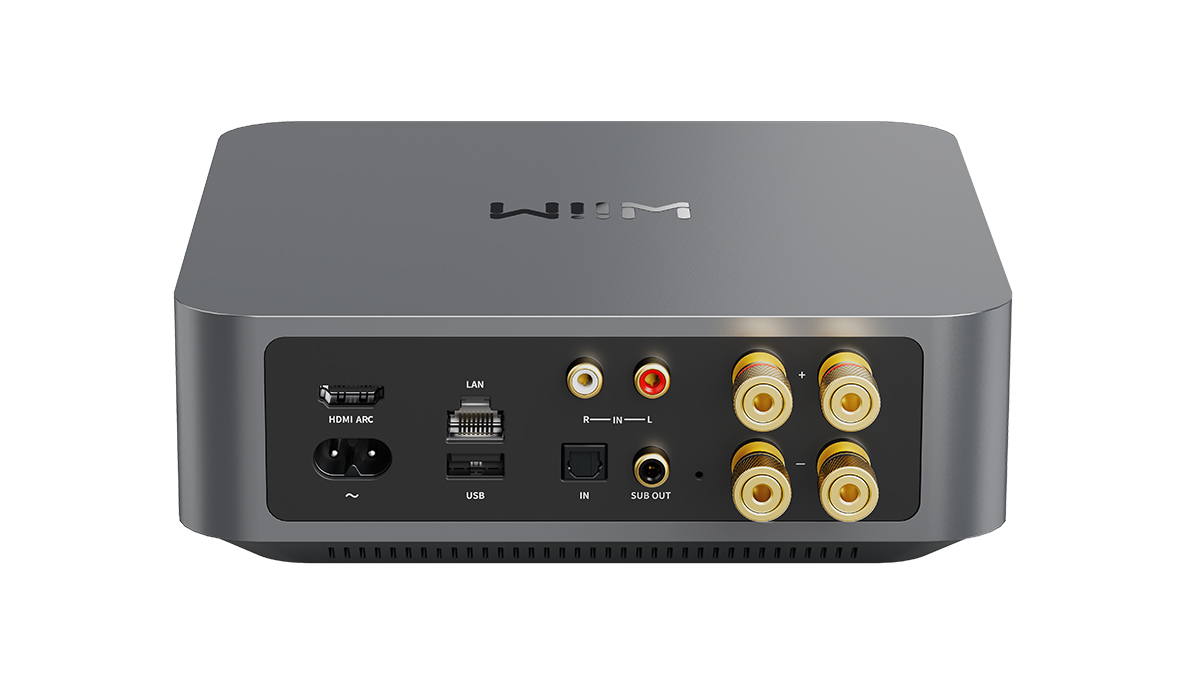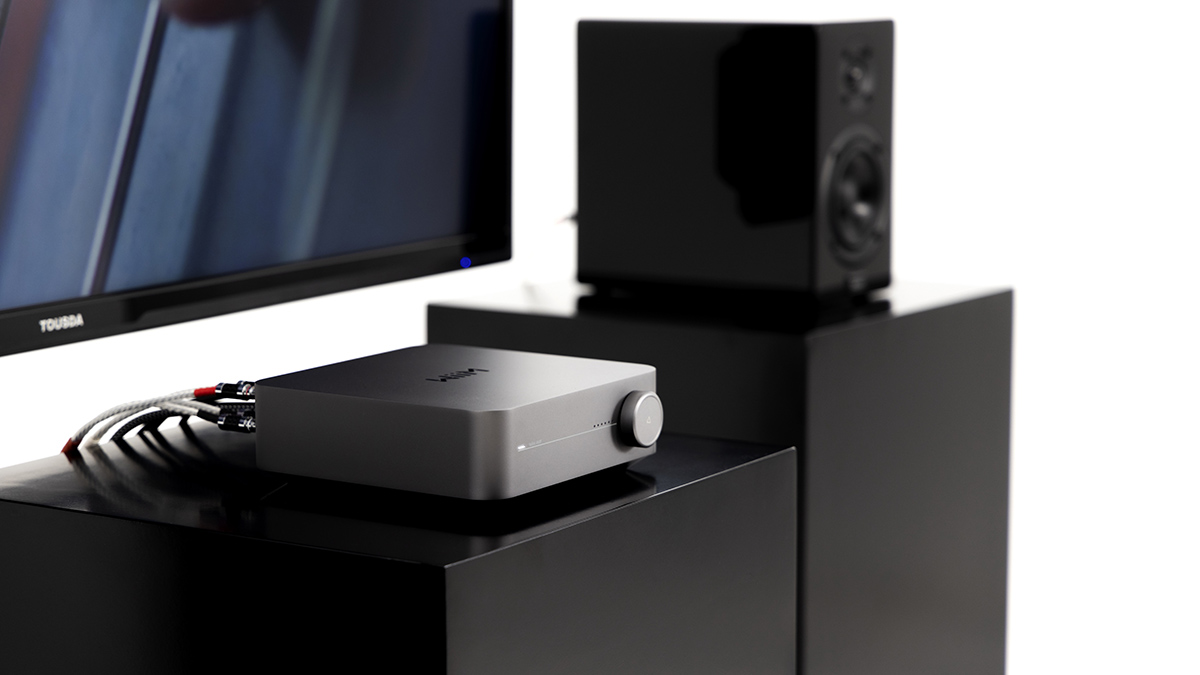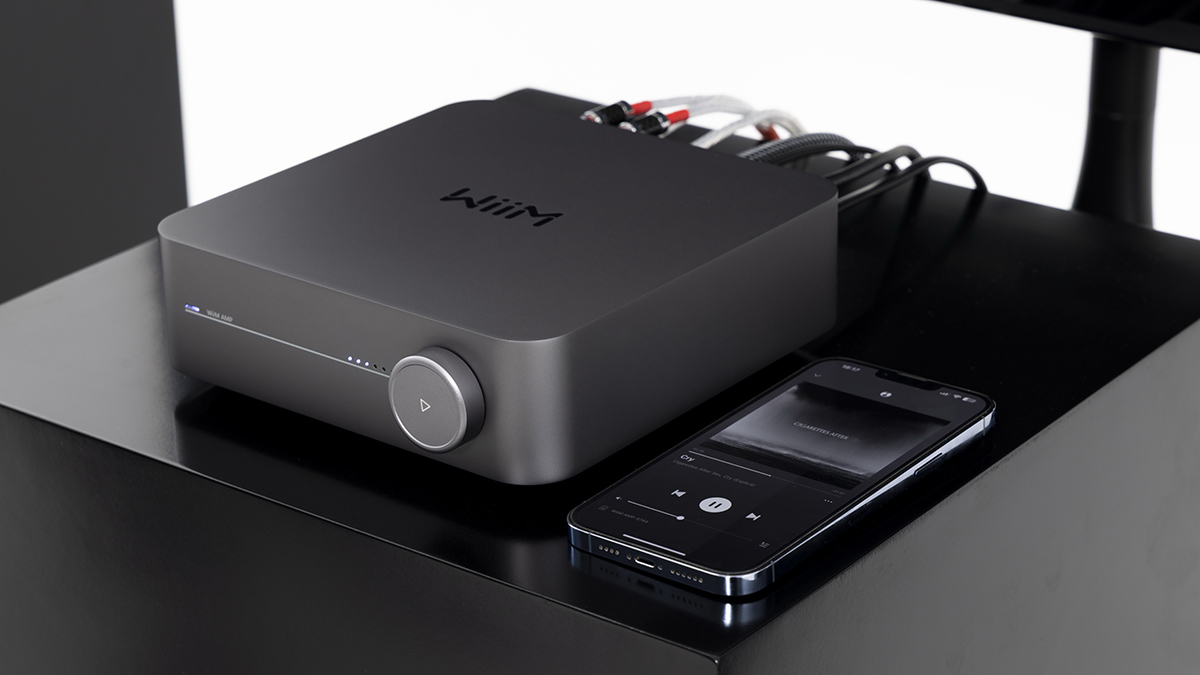MusicRadar Verdict
Smart, simple and competitively priced, the WiiM Amp shows that there's a better way for hi-fi newbies to create a thoroughly modern setup.
Pros
- +
Easy to set up and operate.
- +
Hi-res audio streaming support.
- +
HDMI Arc and subwoofer connectivity for home theatre fans.
- +
Affordable and expandable.
- +
Simple control app.
Cons
- -
No in-app Spotify integration.
- -
You'll need to bring your own speakers.
- -
Quality suffers slightly when you push the volume.
MusicRadar's got your back
WiiM Amp review: What is it?
In the mainstream audio sector, the conventional wisdom over the past few years has been that smart speakers are the way to go. And yes, it’s certainly convenient to be able to have a speaker that you can talk to and will play music from your favourite streaming service.
It wasn’t always this way, though: we fondly remember the days of the Google Chromecast Audio, the long-lost ‘puck’ that once did for music what the standard Chromecast continues to do for video. This could be plugged into your existing hi-fi or speaker setup and you could then cast music to it from your phone; it was a brilliant solution that Google no longer offers (though ours does still work, if a little unreliably at times).
Of course, other streaming solutions are now available, but these are typically pricey and unlikely to appeal to the average consumer. The WiiM range is different, covering a variety of ‘smart audio’ products that are designed to take care of your streaming and some other requirements.
If you just want a simple streaming puck to plug into your amp/speakers, there’s the WiiM Mini, while the WiiM Pro box adds 192kHz/24-bit support and various other features. The WiiM Pro Plus, meanwhile, is designed to sound even better.
And then we come to the WiiM Amp, an outlier in the sense that, rather than simply being a streaming device, this is also a 60W per channel, 8ohm amplifier. As such, you can plug in a set of passive speakers and go, with no other hardware required.


There’s a reasonable amount of connectivity, too, such as optical and line inputs for some of your other audio devices (a turntable, for example). There’s also HDMI Arc, which is great if you want to use it as the basis for a simple stereo home theatre setup. A subwoofer output (with user-adjustable, 30-200Hz crossover) means that you can incorporate one of those if you need/want one, too.
As with WiiM’s other devices, there’s support for wireless playback protocols such as Spotify Connect and Tidal Connect, not to mention AirPlay 2, Chromecast, Alexa Cast, DLNA and good old Bluetooth. The companion app enables you to adjust settings - including the EQ - and if you’ve got a USB stick full of tunes, you can plug that in and play those, too (supported formats include MP3, AAC, ALAC, APE, FLAC, AIFF, WAV, WMA and OGG).
Want all the hottest music and gear news, reviews, deals, features and more, direct to your inbox? Sign up here.
A physical remote control comes supplied, and creating a multiroom setup is as simple as adding more WiiM devices via the app.

WiiM Amp review: Performance and verdict
We’ve heard it said that the WiiM Amp looks like the Mac mini, and there’s certainly some truth in that. It’s a bit taller, though; some way between a Mac mini and Mac Studio in terms of height, we’d say.
Nicely packaged, there’s definitely an Apple-like feel to the unboxing process, and the aluminium case offers a slight feeling of luxury. We love the clean design, too, with all connectivity tucked away round the back and just a status LED and volume knob with indicator on the front (you can have both lights off, if you wish).
You immediately get the sense that you’re in safe hands and that setup will be simple, and so it proves. After plugging in our speakers, downloading the app and installing the available firmware updates we were up and running in no time at all.

The app is clean and straightforward, but how much time you spend in it is up to you. Once settings have been configured, you can simply return to your other music/audio apps of choice and connect from there, providing they’re supported, but you can also connect and operate plenty of them from within the WiiM shell. One notable exception is Spotify; when you select this in the WiiM app, you’re simply taken out to the Spotify app so you can do your business there.
The process of adding additional 'WiiMs' is straightforward - ours were automatically detected as soon as they were plugged in and we turned on the app - and linking them for multiroom playback is easy, too. You can also stream the audio from any of your WiiM Amp's audio inputs to these other WiiMs, so if you want to play a vinyl record and hear it all around the house (for example), you can. Volume levels can be adjusted for both the group as a whole and on a device by device basis.
And that’s about all there is to it - the WiiM Amp sounds more than good enough to satisfy all but the most demanding of audiophiles, particularly if you stream hi-res audio to it, and the ability to add more devices to your setup (not to mention that subwoofer compatibility) means that, if you buy one, you’ve got expandability options, too. If you're dealing with a big space, you might want something with a bit more grunt - the WiiM Amp doesn't sound as good at its highest volume settings - but for the vast majority of small to medium sized rooms, it delivers the goods.
Whether you’re starting from scratch or want to repurpose a set of passive speakers that you already own, then, it’s hard to think of a better or more affordable way of getting into high-quality smart audio than this.
MusicRadar verdict: Smart, simple and competitively priced, the WiiM Amp shows that there's a better way for hi-fi newbies to create a throughly modern setup.
WiiM Amp review: Hands-on demos
WiiM Amp review: Specifications
- Dimensions: 7.48” x 7.48“ x 2.48" (190 mm x 190mm x 63 mm)
- Weight: 1.84kg(4.1 lbs)
- Colours: Space Gray, Silver
- Finish: Aluminum
- Controls: Volume knob, play/pause, and more
- LEDs: Status, Volume
- Power: 60 Watts/channel at 8 ohms; 120 Watts/channel at 4 ohms
- Speaker output: Stereo or dual mono sound
- Home theatre audio formats: Stereo PCM (Dolby Digital and DTS are not supported)
- Audio inputs: HDMI Arc, Optical, Line
- Audio outputs: Passive speaker terminal, subwoofer output
- Power supply: 00-240V 50/60Hz AC Power
- Network: IEEE 802.11 b/g/n/ac Dual band, 10/100 Mbps LAN
- Bluetooth: BT 5.1, A2DP Sink and Source, AVRCP, BLE HID
- Supported streaming protocols: AirPlay 2, Chromecast, Spotify Connect, TIDAL Connect, Alexa Cast, DLNA

I’m the Deputy Editor of MusicRadar, having worked on the site since its launch in 2007. I previously spent eight years working on our sister magazine, Computer Music. I’ve been playing the piano, gigging in bands and failing to finish tracks at home for more than 30 years, 24 of which I’ve also spent writing about music and the ever-changing technology used to make it.


